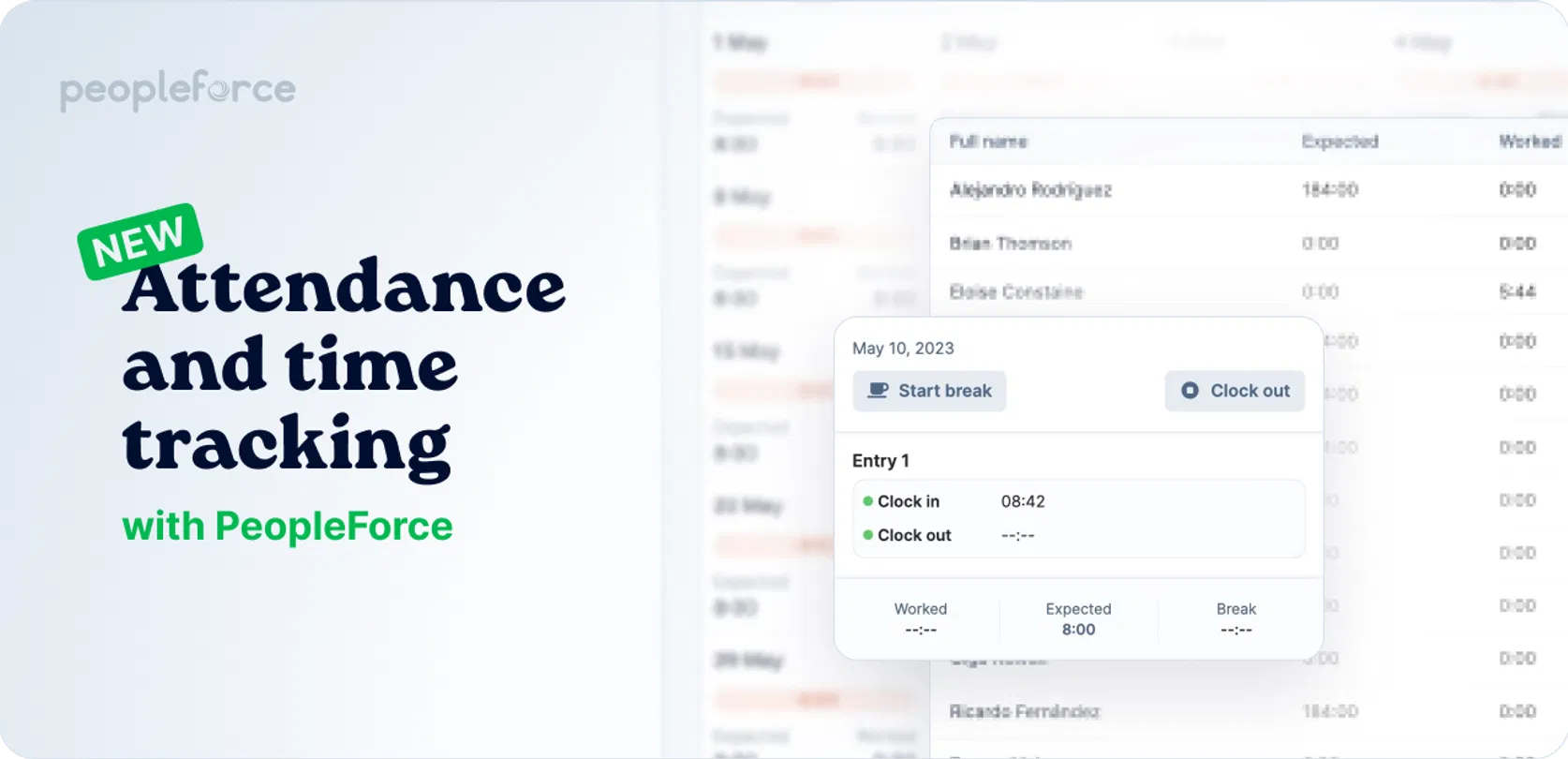
Simplify attendance and time tracking with PeopleForce
Attendance tracking is the process of accurately recording and monitoring the hours employees work at a company. This includes tracking the hours between when an employee enters and leaves the workplace, any overtime hours worked, and any time not performed due to absences or other reasons. Maintaining accurate attendance records is essential for proper payroll processing and compliance with labour laws and regulations.
From now on, in our HR platform, you can track employee working hours and overtime and manage attendance policies. Please read this article to understand all the nuances of the new feature and configure it to comply with your country's legislation.
Please note that the attendance tracking feature is currently in beta. For those interested in trying out the feature, contact the customer support team via chat or email - support@peopleforce.io.
What is the purpose of keeping track of employees' working hours?
Attendance tracking is a fundamental aspect of any company's operations:
- Compliance: Attendance tracking ensures work schedule compliance, helping companies meet legal requirements and labour regulations.
- Fraud prevention: It prevents labour abuse and fraud, such as unpaid or uncompensated overtime, by accurately recording employees' work hours and attendance.
- Operational efficiency: Attendance tracking helps companies optimize their operations by ensuring the correct number of employees meets business demands.
- Department coordination: Attendance tracking aids in coordinating different departments within a company, ensuring that teams work together efficiently.
- Self-discipline: Attendance tracking encourages self-discipline among employees, as they become aware that their presence and punctuality are being monitored.
- Time optimization: By tracking attendance, companies can identify time management issues and implement strategies to optimize the utilization of employees' time, enhancing overall productivity.
- Business objectives : Attendance tracking significantly contributes to achieving business objectives in the medium and long term by maintaining a structured work environment.
However, there are regulations regarding employee attendance at work that depend on the legislation of different countries. Let's explore this more detail and how our HR platform can assist in such situations.
Time tracking regulations in EU countries
Time tracking is crucial to managing employee productivity and ensuring accurate payroll processing in any organization. However, different countries have varying regulations regarding the use of time-tracking tools.
In the European Union, the Working Time Directive is in place to protect workers' rights. It mandates that the maximum average working time is 48 hours per seven-day period, including overtime. Employees must also have a rest break if they are on duty for more than six hours.
Additionally, workers are entitled to at least 11 consecutive hours of rest every 24 hours and at least four weeks of paid annual leave per year.
Night workers are given extra protection, including limitations on working hours and the right to free health assessments.
Complying with these regulations is more manageable using practical time-tracking tools such as PeopleForce. By doing so, companies can ensure they meet their legal obligations while streamlining their HR management.
Registration of working hours in Spain
The Spanish government has implemented regulations by the EU Working Time Directive. As a result, Spain was one of the first EU member states to require companies to track and record the working hours of their employees, except for top-level executives. This rule applies to all companies in Spain, regardless of their size or industry.
Employers in Spain must track and record the working hours of their employees, including their breaks, and keep these records for four years. These records must be accessible to employees, government agencies, and trade unions. There are no specific requirements for the method or format of the documents.
The regulations apply to both remote and office-based work and all types of employment contracts. Failure to comply can result in fines ranging from €625 to €6,250.
Control of hours worked in Germany
Employers are legally required to document their employees' working hours. They can record the information on a hard copy or using timekeeping software. However, the server must be located in Germany if employers record working hours digitally.
The following information must be on file: date, employee name, start and end of a work day, number of working hours, labour, and employee signature. In addition, it is suggested that employees keep written notes of their work hours and breaks. The manager, supervisor, or colleague can sign these notes in a dispute. If a company does not comply with these regulations, it could receive a fine of up to €15,000.00.
Simplifying attendance tracking with PeopleForce
As we can see, the EU requires companies to track and maintain employee working hours records. However, there are no specific regulations on how to track and store this information. Then there’s the issue that traditional methods like Excel spreadsheets are time-consuming and challenging to manage.
This is where PeopleForce comes in, as it offers comprehensive HR software, including time tracking and a wide range of other features that streamline HR management, making it the perfect solution for your company's administrative needs.
How can I track and manage working hours?
With PeopleForce, you can access an all-in-one HR software solution with a simple and automated attendance tracking feature. Tracking attendance in PeopleForce is easy; employees need to click the "Clock in" button to activate time tracking, pause it during breaks, and "Clock out" at the end of the day.
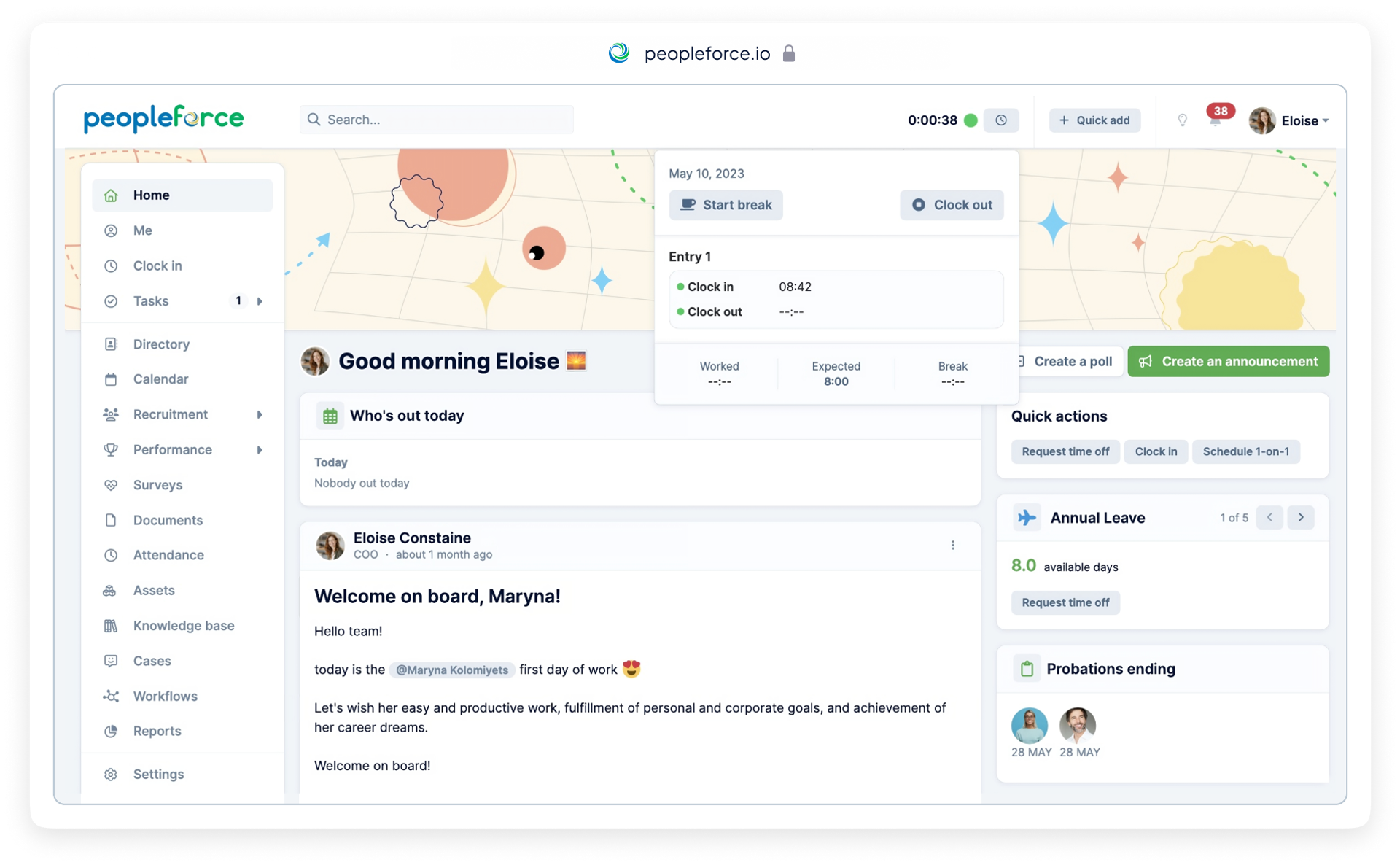
Simplify attendance tracking for your employees
Using PeopleForce, employees can effortlessly keep track of their attendance and monitor their working hours, break, leave, and remaining hours, all in one central location. This information is presented in a visually appealing calendar or list view, providing employees with a clear and easy-to-understand overview of their attendance. Additionally, the system automatically calculates all time tracked, freeing employees to focus on their work and ensuring accurate payroll processing.
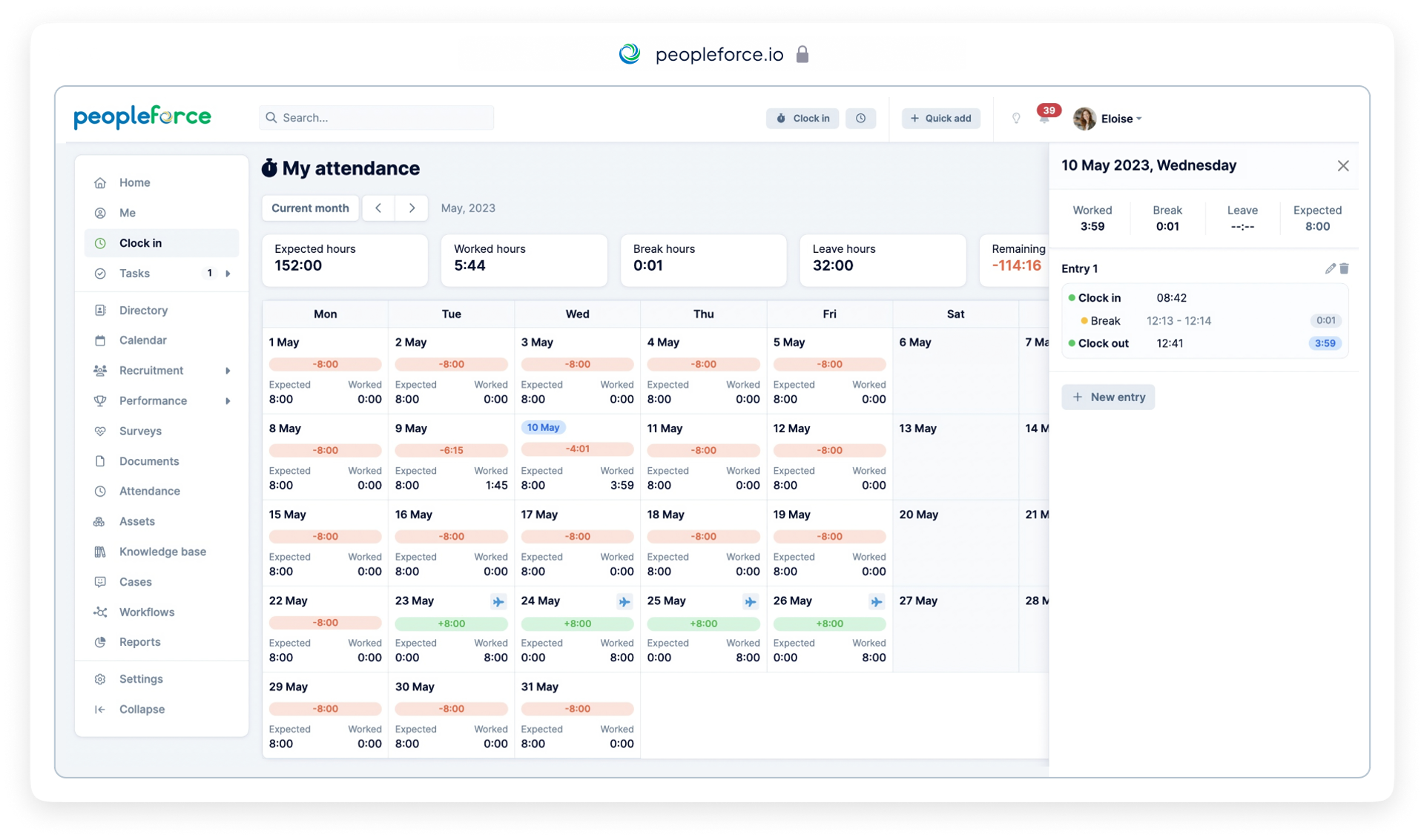
Quick access to all attendance tracking records at the company level
When managing your team's attendance, tracking and recording their working hours can take time and effort. With PeopleForce, you can quickly review attendance records for individual employees or the entire team, giving you complete visibility into how your team is performing. Plus, you can easily export reports for further analysis or to share with other members of your organization.
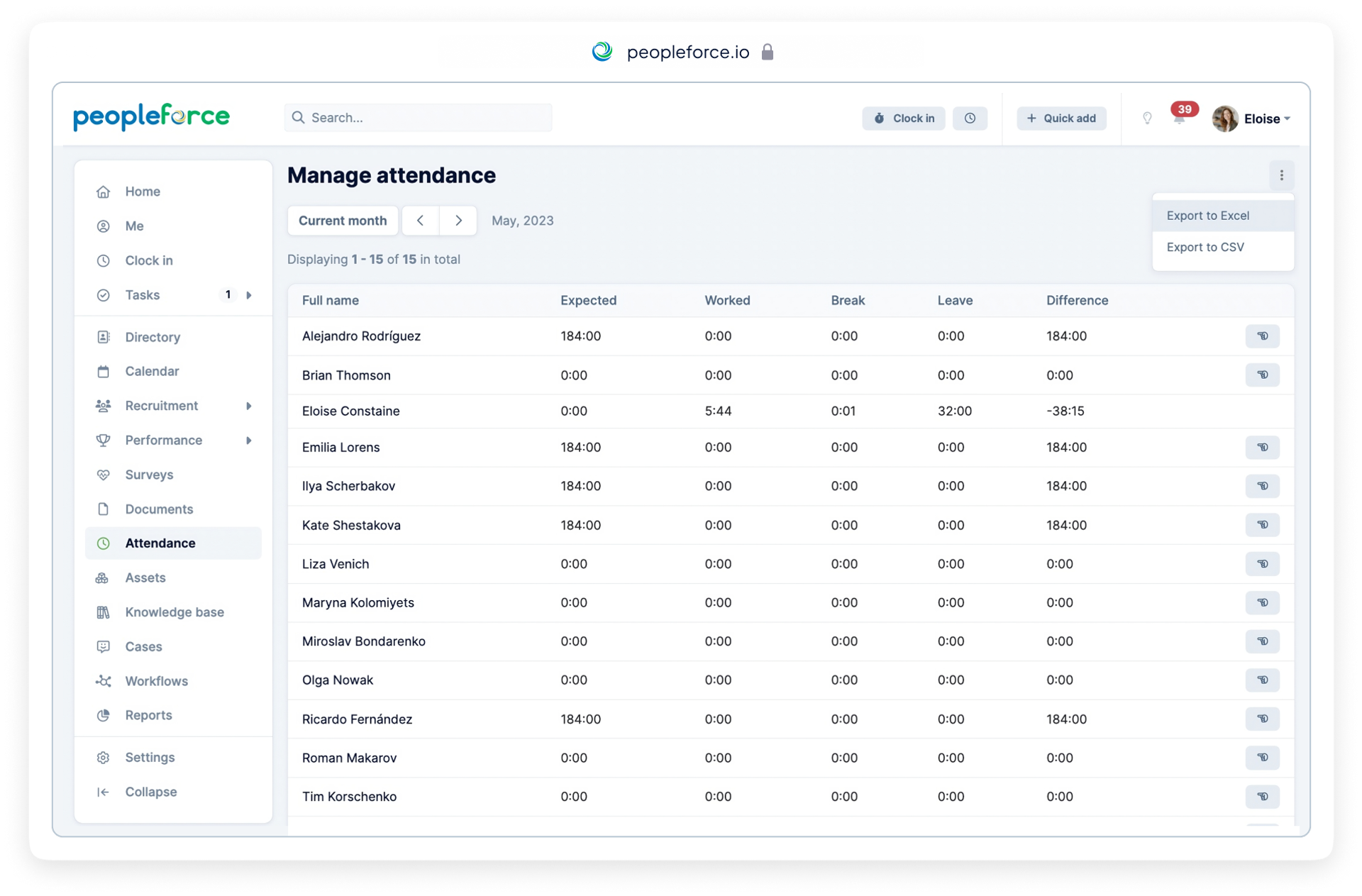
PeopleForce offers a hassle-free attendance tracking solution for organizations of all sizes and locations. With PeopleForce, employees can easily manage their work and personal lives, resulting in increased productivity and job satisfaction.
Managing attendance policies
Please also remember the potential differences in time-tracking rules depending on the country. With the Attendance Policies feature, you can manage how time is tracked based on location. In the future, we will continue to develop and enhance this functionality. Currently, break rules are available, allowing you to assign specific break times to employees and locations.
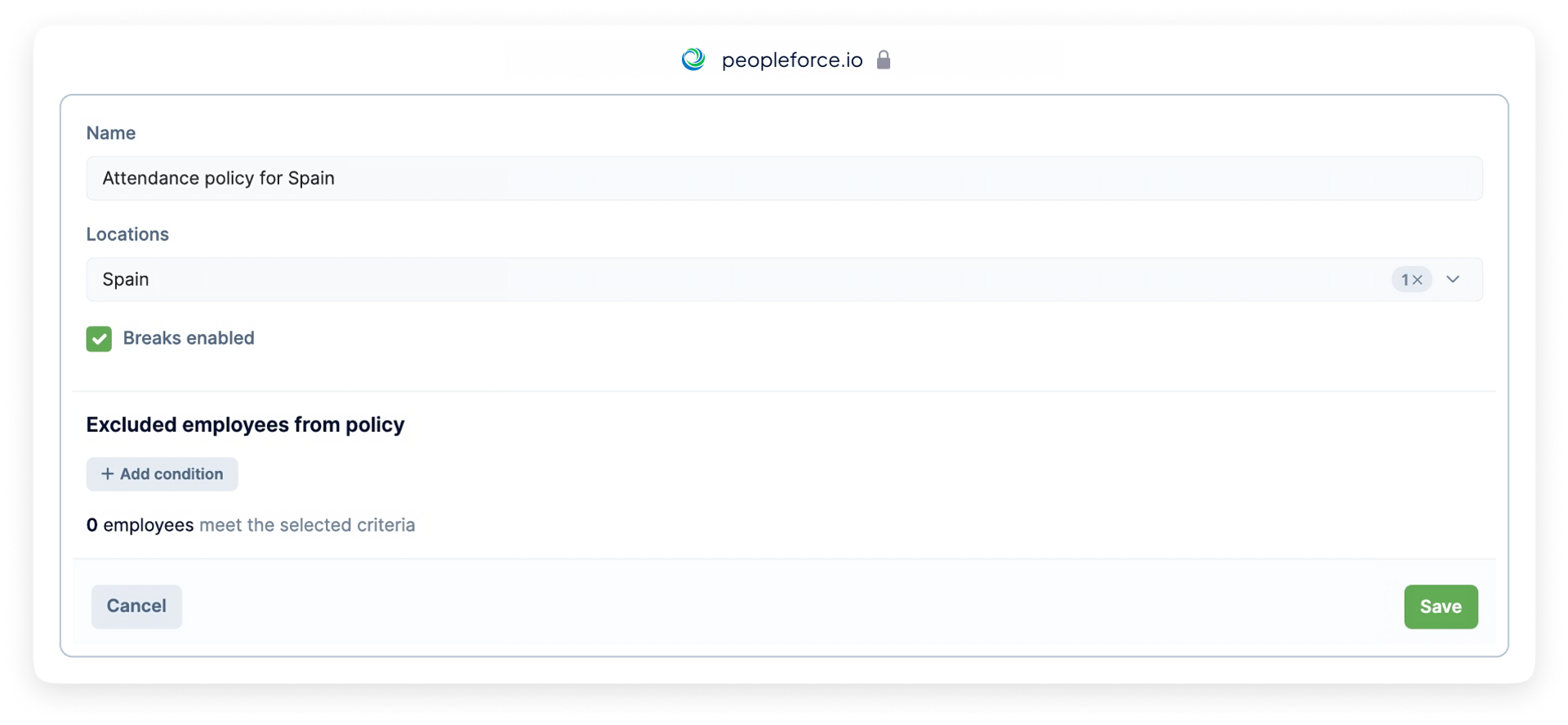
See how PeopleForce can help your company
